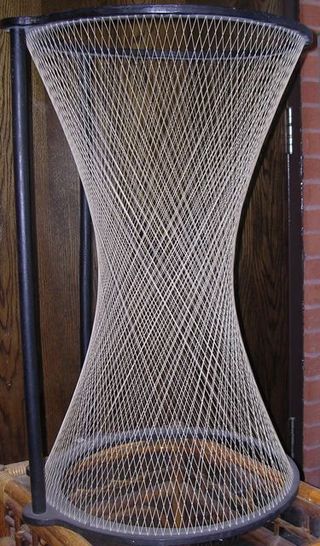Top Qs
Timeline
Chat
Perspective
Regulus (geometry)
Surface in three-dimensional space From Wikipedia, the free encyclopedia
Remove ads
In three-dimensional space, a regulus R is a set of skew lines, every point of which is on a transversal which intersects an element of R only once, and such that every point on a transversal lies on a line of R.

The set of transversals of R forms an opposite regulus S. In the union R ∪ S is the ruled surface of a hyperboloid of one sheet.
Any 3 skew lines generates a pair of reguli:[1]
- The set of lines that intersect all 3 of them sweeps out a quadratic surface. This ruling of this quadratic surface is the regulus.
- The set of lines that intersect all lines in the regulus is the complementary regulus or associated regulus, by Gallucci's theorem.
Any 3 lines in a regulus generates the complementary regulus, and vice versa. The regulus surface is the unique quadratic surface that contains these 3 lines. The pair of regulus sweep out the same surface, showing that it is a doubly ruled surface.
According to Charlotte Scott, "The regulus supplies extremely simple proofs of the properties of a conic...the theorems of Chasles, Brianchon, and Pascal ..."[2]
In a finite geometry PG(3, q), a regulus has q + 1 lines.[3] For example, in 1954 William Edge described a pair of reguli of four lines each in PG(3,3).[4]
Robert J. T. Bell described how the regulus is generated by a moving straight line. First, the hyperboloid is factored as
Then two systems of lines, parametrized by λ and μ satisfy this equation:
- and
No member of the first set of lines is a member of the second. As λ or μ varies, the hyperboloid is generated. The two sets represent a regulus and its opposite. Using analytic geometry, Bell proves that no two generators in a set intersect, and that any two generators in opposite reguli do intersect and form the plane tangent to the hyperboloid at that point. (page 155).[5]
Remove ads
See also
References
Wikiwand - on
Seamless Wikipedia browsing. On steroids.
Remove ads





